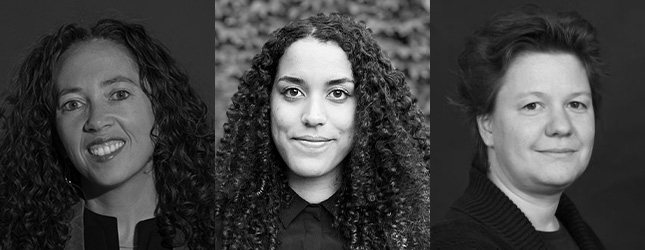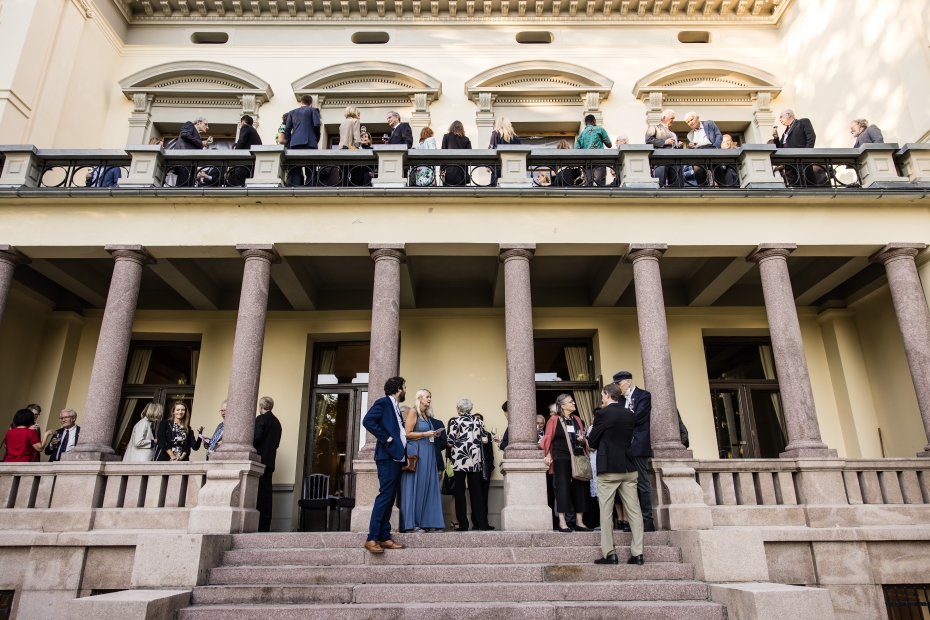
Kavlisymposium i astrofysikk
Praktisk informasjon
Symposiet er åpent, men du må melde deg på.
Prosjektleder: Pål Pettersen
Oslo
Mandag 2. september
10:00 – 12:00 Parallelle prisvinnerforelesninger, UiO
Kavli Prize Laureate Lecture i astrofysikk, UiO
Kavli Prize Laureate Lecture i nanovitenskap, UiO
Kavli Prize Laureate Lecture i nevrovitenskap, UiO
Tirsdag 3. september
14.00 – 15:15: Utdeling av Kavliprisen 2024, Oslo Konserthus.
19:00 Regjeringens offisielle bankett, Oslo rådhus (kun for inviterte)
Onsdag 4. september
Special event:
09:00 – 13:00 Kavli Prize Week – CuttingEdgeAI, UiO/ Universitetets aula
(samarbeid mellom NORA (Norwegian Artificial Intelligence Research Consortium) og Kavliprispartnerne
Torsdag 5. september
12:00 – 18:00 Kavlisymposium i astrofysikk
18:00 – 21:00 Festmiddag i Akademiet for astrofysikerne (kun for inviterte)
Trondheim
Onsdag 4. september
19.00: Festmiddag, Erkebispegården
Torsdag 5. september
10:00 – 15:00 Kavlisymposium i nano- og nevrovitenskap
19.00: Middag
Kontaktperson Kavliuka:
Prosjektleder Eirik Lislerud
Se Kavliprisen på YouTube
Åtte forskere hedres med Kavliprisen 2024 (DNVA)
Europeisk forskning risikerer å havne i bakleksa
(Kronikk av preses Lise Øvreås, Morgenbladet 14.6.24)
Vil du høre fra noen av verdens fremste forskere i astrofysikk? Delta på Kavlisymposium i Det Norske Videnskaps-Akademi!
Praktisk informasjon
Symposiet er åpent, men du må melde deg på.
Prosjektleder: Pål Pettersen
Kavliprisuka fortsetter i Oslo og 5. september inviteres det til Kavlisymposium i astrofysikk i Akademiet. Få med deg foredrag fra spesielt inviterte forskere.
Kavliprisen 2024 i astrofysikk tildeles Sara Seager og David Charbonneau for oppdagelsen av eksoplaneter og beskrivelsen av disse planetenes atmosfære. De har utviklet metoder for oppdagelse av forskjellige atomslag i planeters atmosfærer og for å måle infrarød varmestråling, som igjen har dannet grunnlag for å finne de molekylære fingeravtrykkene til atmosfærene rundt både gasskjemper og steinplaneter. Bidragene deres har vært viktige for den enorme fremgangen de siste 20 årene innen utforskningen av myriadene av eksoplaneter.
Om foredragsholderne
Ignar Snellen is a professor in observational astrophysics at Leiden University and currently Scientific Director of Leiden Observatory. Snellen received his PhD from Leiden University, and returned to his alma mater after positions at the University of Cambridge and Edinburgh in the UK. His research focuses on the development of new techniques and ground-based instrumentation for the characterisation of extrasolar planets. In 2022 he was awarded the Spinoza Prize, the highest academic honour in the Netherlands.
Jonathan Fortney is a Professor and the Department Chair of Astronomy and Astrophysics at the University of California, Santa Cruz. He is an expert in the atmospheres and interiors of planets in the solar system and exoplanets around other stars. He is a former member of NASA's Cassini Mission science team, which transformed our understanding of Saturn, as well as a member of NASA's Kepler Mission science team, which found over 3000 exoplanets. Fortney predominantly works on pioneering theoretical models of the physics and chemistry of planets and has won numerous awards for his work, including from the American Astronomical Society and the Simons Foundation. Much of his current work involves working to understand observations of exoplanet atmospheres with the NASA/ESA James Webb Space Telescope.
Malena Rice is an Assistant Professor in the Yale University Department of Astronomy. Her research centers on the formation and evolution of planetary systems, spanning topics including exoplanets, stars, and the outer solar system. She received her B.A. degrees in Physics and Astrophysics at UC Berkeley in 2017 before completing her Ph.D. in Astronomy at Yale University, for which she was awarded the 2022 IAU PhD Prize. Prior to joining Yale’s faculty, she spent one year at the MIT Kavli Institute as a Heising-Simons 51 Pegasi b Postdoctoral Fellow. Malena holds leadership roles in support of the NASA Transiting Exoplanet Survey Satellite (TESS) and Habitable Worlds Observatory (HWO) missions, and she is an Executive Committee Member for NASA’s Exoplanet Exploration Program Analysis Group (ExoPAG). She has authored over 75 academic publications, and she has been named as a Scialog Fellow, a Rising Talent by the Women’s Forum for the Economy & Society, and a member of the Forbes 30 Under 30 list.


Jackie Faherty is a senior research scientist and senior education manager at the American Museum of Natural History (AMNH). Her research group entitled “Brown Dwarfs in New York City (BDNYC)” is at the forefront of low mass star, brown dwarf and giant exoplanet characterization studies. She is also co-founder of the successful citizen science project called “Backyard Worlds: Planet 9” which has involved over 150,000 volunteers in searches for previously missed cold components of the nearby solar neighborhood. In her unique position at AMNH, Faherty strives to create more opportunities for underrepresented minorities to enter STEM through unique outreach endeavors.
Diana Powell studies the nature of extrasolar planets and how they form and evolve. Her work spans a variety of topics, including protoplanetary disks, planet formation, and planetary atmospheres. She is particularly interested in using the detailed evolution of small particles to interpret observational data and understand planetary evolution. Powell received her BA in astrophysics and physics from Harvard University, and her PhD in astronomy and astrophysics from the University of California, Santa Cruz. Before starting as a professor at the University of Chicago, she was a NASA Sagan Postdoctoral Fellow at the Institute for Theory and Computation at the Harvard-Smithsonian Center for Astrophysics.
Stephanie Werner is Co-Director of the Centre for Planetary Habitability and Professor for Geophysics and Planetary Sciences at the Department for Geosciences, University of Oslo. Her prime research interests comprise comparative planetology, planetary dynamics, exoplanet systems, planetary and geophysics.
Lunsj
Velkommen ved Generalsekretær i Det Norske Videnskaps-Akademi, professor Gunn Elisabeth Birkelund
Symposiet åpnes av professor Willy Benz, president av International Astronomical Union
Prof. Ignas Snellen – The European Extremely Large Telescope and the search for Life in the Universe
While JWST is revolutionising the field of extrasolar planets as we speak, the next leap forward will come from the Extremely Large Telescope (ELT) with its anticipated first light in 2028. In this talk I will discuss how the ELT will probe planetary systems around our nearest neighbours, will zoom in on the atmospheres of Earth-like planets around small dwarf stars, and will be able to identify oxygenated atmospheres like our own.
Diana Powell: Connecting Planet Formation & Characterization
A fundamental understanding of planetary histories and characteristics requires an empirical connection between planet formation and evolved planets—a long-sought goal of astrophysics. This connection is now increasingly possible due to simultaneous revolutions in the observations of protoplanetary disks and exoplanet atmospheres. A key step towards relating these observations of different evolutionary stages is to characterize the composition of material in protoplanetary disks and relate these properties to the atmospheres of planets. In this talk, I will discuss initial steps taken towards this goal. I will discuss novel methods of determining the fundamental properties of protoplanetary disks, describe how the detailed properties of clouds shape observations of substellar atmospheres, and demonstrate that atmospheric physics can give a new understanding of the nature of protoplanetary disks.
Kaffe
Foredrag ved professor Malena Rice
Prof. Jonathan Fortney – Understanding the Composition of Planets: Exoplanet and Solar System Synergies
The exoplanet revolution has opened our eyes to the tremendous diversity of planets, as exoplanets are found at a variety of masses, sizes, and orbits not seen in our solar system. Our planetary system is but one realization of the complex processes of planet formation and evolution. In this talk I will discuss what we are learning about the composition of planets and how it is challenging our theories of planetary atmospheres and interior structure. Across a broad range of planet masses, I'll place our emerging understanding of gas giant exoplanets in the context of Jupiter and Saturn, and of rocky exoplanets in the context of Earth and Venus, while also examining the worlds in between.
Kaffe
Prof. Stephanie Werner – The Quest for Earth-like Exoplanets at the Centre for Planetary Habitability
The Centre for Planetary Habitability is one of the new NFR-funded Centres of Excellence (SFF), which started in July 2023, and which has at is core the search for worlds that can or could have been habitable. The idea that worlds around other stars could develop and maintain environments hospitable to life ― in a way similar to our planet ― has captivated scientists for centuries. Yet, to investigate this question, we must recognize and characterize the key conditions that make a planet habitable. This endeavour is the prime objective for PHAB.
The only planet on which life is known to have originated (Earth) appears unique in many ways, including the presence of abundant surface water, a large moon, a long-lived magnetic field, and plate tectonics. Yet, which of these and other characteristics are essential for its long-term habitability? Equally, how have Earth’s physical and chemical attributes, and thus our planet’s proclivity for life, evolved? How can we recognize distant worlds around other stars that have been or could be habitable? These questions, and a new understanding of planetary habitability unfolding from them, are especially important as we now embark on an unprecedented era of exploration and discovery of extra-solar planetary systems. Knowledge collected from Earth and other rocky planets in the Solar System will enable us to recognize the key conditions for planetary habitability and to develop predictive models to identify habitable planets around other stars.
Prof. Jackie Faherty – Explaining the Diversity of Cold Worlds with the James Webb Space Telescope
The James Webb Space Telescope has the capability to reveal complex chemistry in worlds formed beyond our own solar system. A key class of objects that has been trailblazing our understanding of the diversity of atmosphere compositions for giant exoplanets is brown dwarfs. In this talk I will show a library of data obtained using JWST on brown dwarfs with temperatures that range from ~700K all the way down to 250K – just 100 degrees warmer than Jupiter. The spectra will highlight the key molecules we can detect in worlds beyond our own. While we initially theorized that chemistry would be primarily guided by the temperature of a given source, what JWST reveals is a far more complicated landscape where secondary parameters like age, metallicity, and gravity strongly influence what we see.
